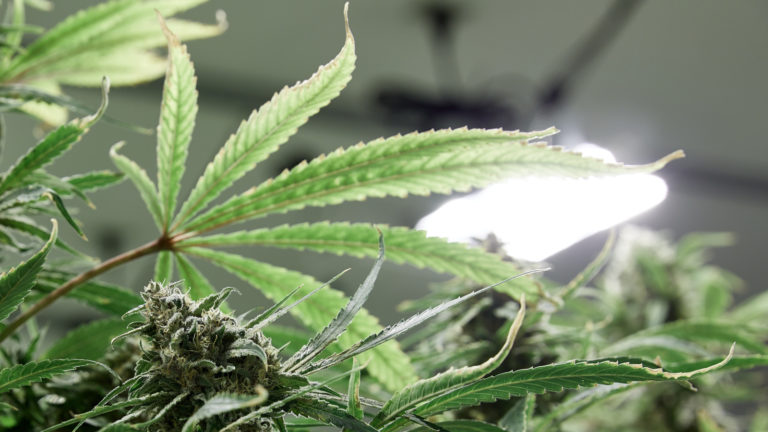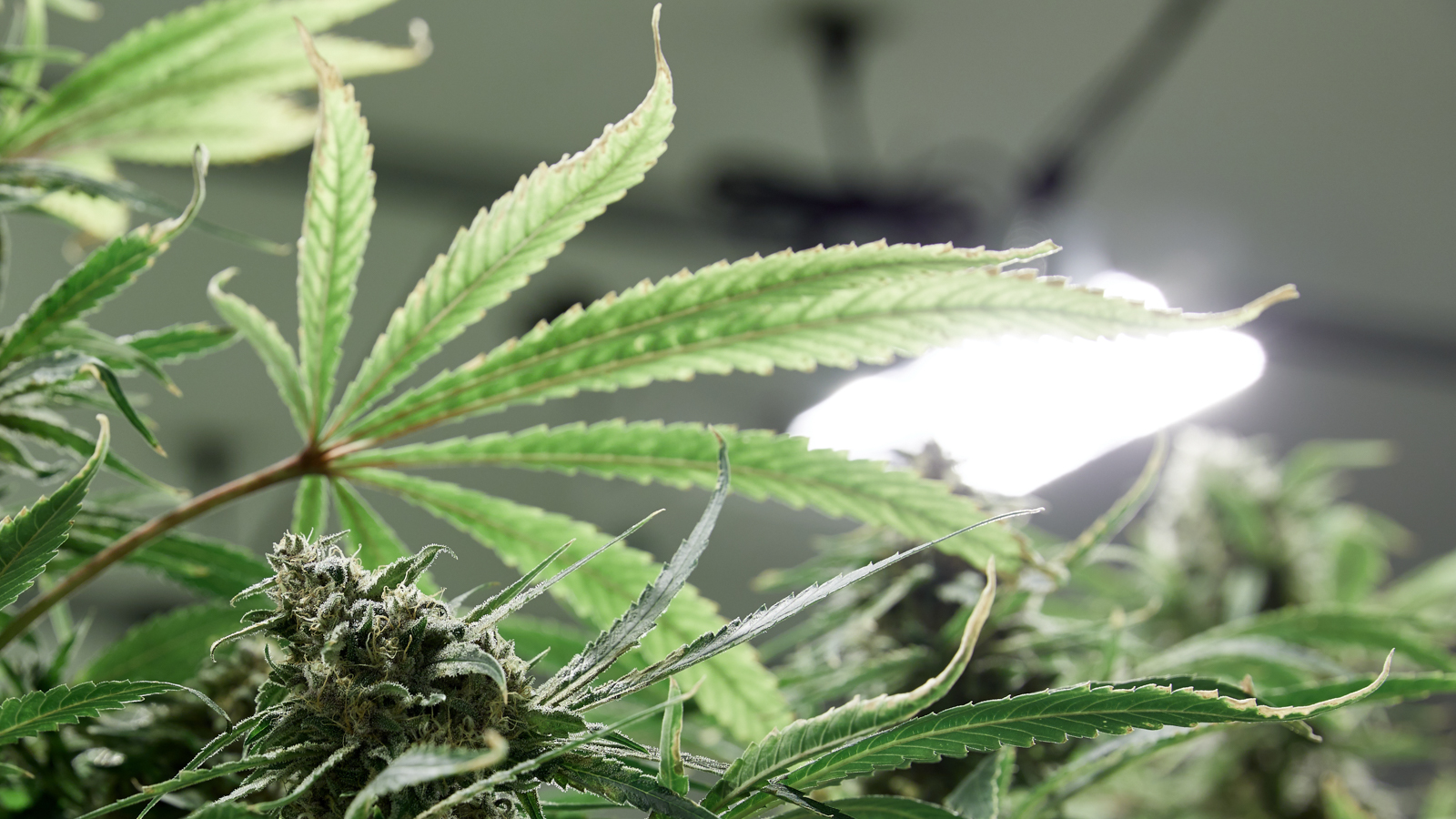High-pressure sodium (or HPS) lights have been a dependable choice for indoor cannabis growers for decades. Despite recent advancements in other grow light technology, like LED lights, for example, HPS lights remain the go-to for many seasoned and novice growers alike.
What are HPS lights?
Similar to compact fluorescent light (CFL) bulbs, high-pressure sodium bulbs use a combination of vapor, gas, and electricity to produce light. In addition to the high-pressure variety, there is also a low-pressure sodium (LPS) light and together they are known more broadly as sodium vapor lamps.
 Photo by: Gina Coleman/Weedmaps
Photo by: Gina Coleman/WeedmapsImage lightbox

Low-pressure sodium lights were first popularized in the 1920s, and they continue to be highly efficient lighting options. Because of their ability to put out large amounts of light and their near monochromatic yellow light, their use is generally limited to applications where seeing color isn't that important. Today, LPS lights are commonly used for street lights, tunnel lighting, and security lighting.
High-pressure sodium lights, also known as high-pressure sodium arc lights or sodium vapor lights, were introduced in the 1960s. They emit a broader spectrum of light and color temperature than their LPS counterparts with a powerful light and decent energy efficiency, and they have been adopted for many applications, including cannabis cultivation.
Using HPS for growing cannabis
Because the spectrum of light HPS bulbs emits contains more red, indoor growers often prefer HPS lights for the flowering stage (when a more red-hued light is optimal for bud development). They switch to ceramic metal halide (CMH) lights, which lean more toward the blue end of the spectrum, for the vegetative phase. That said, growers who prefer to keep things simple with a single type of lamp often choose HPS bulbs for the whole life cycle.
Both CMH and HPS lights belong to a broader group of lights called high-intensity discharge (or HID) lights. (Yes, when we're talking cannabis grow lights there are a lot of acronyms to keep track of.)
Like any lighting setup, efficiency varies. A high-quality HPS fixture might be more efficient than low-quality LEDs (light-emitting diodes), but generally speaking, HPS lighting solutions tend to be in the middle of the pack in terms of efficiency: they are less efficient than LED systems but more efficient than CFL systems.
An HPS grow light system
Using HPS bulbs for your indoor grow room requires a proper setup, which makes it a little more complicated and involved than other plug-and-play solutions. The main components of an HPS system include:
- Bulbs: Generally speaking, the larger your grow space, the greater the wattage requirement
- Ballast: The power supply for your bulbs can be digital or magnetic
- Hood: Sits over the bulb and reflects light down toward the plants to reduce waste and optimize light exposure
- Grow tent: Not essential but may increase efficiency
- Exhaust system: Helps dissipate the considerable heat HPS bulbs produce, especially in a tight, enclosed space like a grow tent
- Timer: Optional tool to control lighting systems
HPS lights versus other grow lights
HPS lights are tried and tested. They have developed a large base of use among indoor growers because they are relatively inexpensive, have decent efficiency, and are known to produce reliable yields.
When comparing an HPS system to compact fluorescent bulbs (CFLs), HPS is generally preferred for its luminosity and efficiency. That said, CFLs are simpler since they use traditional socket shells and can be easier to fit into short or oddly shaped grow spaces. HPS bulbs produce a lot of heat and need to be kept well away from plants, whereas CFLs and LEDs can both be closer to the canopy without danger.
Speaking of heat, it's a major point of comparison when looking at LED lighting systems, which run the coolest of all. Because of the heat the bulbs emit, HPS grow rooms often need an exhaust system. LED systems are typically more energy-efficient, but they're most expensive. HPS systems are mid-market as far as initial set-up and running costs go.
Growers, especially at commercial scale, are increasingly building hybrid systems that utilize a mix of LED, CFL, CMH, and/or HPS lighting to capitalize on the benefits provided by each.
Disposing of HPS lights
Like CFL bulbs, HPS bulbs contain a small amount of mercury. This does pose some risk in the event that they break. It also means that HPS bulbs need to be properly disposed of when they reach the end of their useful life.

